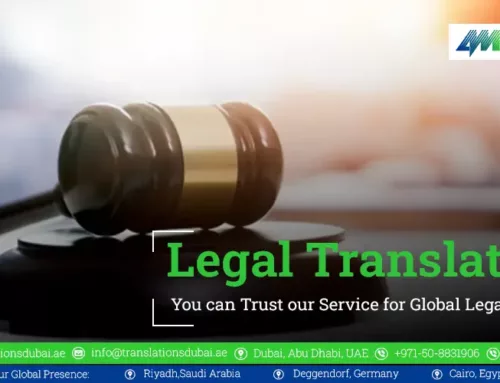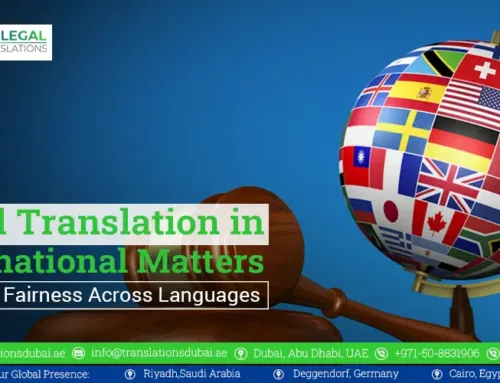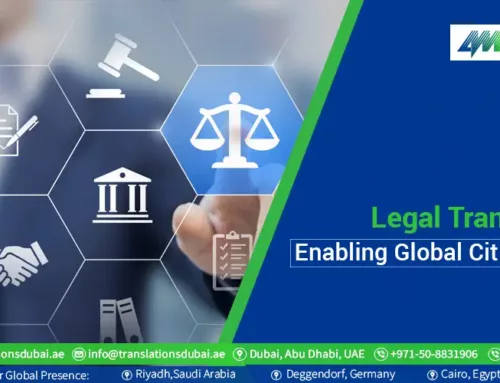Welcome to our blog post on translation! As the global marketplace continues to expand, the need for accurate and reliable Legal Translation has become more crucial than ever. Whether you are a lawyer, a business owner, or an individual seeking legal services, understanding the key steps and best practices of translation is essential in ensuring the integrity and effectiveness of your legal documents.
In this post, we will explore how 4M Translation provides you with valuable insights to make this translation process easier and more efficient. So, let’s get started and discover the top key steps and best practices of translation together!
Understanding Legal Translation: Definition and Importance
Definition:
Legal and accurate translation is a specialized process that involves translating legal documents, contracts, and other legal materials from one language to another. It is crucial to ensure that legal documents maintain their accuracy and precision, while also preserving the legal context and intent of the original document.
Importance:
Translation is crucial for accurate communication of legal concepts across languages, preventing misunderstandings that could compromise legal processes. Precision in language is vital for upholding the rule of law and ensuring fairness in legal proceedings. Accurate translation is essential for international legal transactions and collaborations, facilitating cross-border cooperation.
Key Steps in the Process of Legal Translation
Translation involves several key steps to ensure accuracy and precision in translating legal documents:
- Firstly, the translator needs to have a deep understanding of both the source and target languages, as well as legal terminology.
- Next, thorough research is conducted to understand the legal concepts and laws in both countries.
- The translation process then begins, focusing on preserving the legal context and intent of the original document.
- Finally, a meticulous review and proofreading of the translated document is done to ensure accuracy.
Following these key steps is crucial in delivering reliable and effective legal translation services.
Essential Best Practices for Accurate Legal Translation
Translation requires adherence to several essential best practices to ensure accuracy and reliability:
- Firstly, it is crucial to engage a professional translator with expertise in both legal terminology and the source and target languages.
- Additionally, maintaining clear and concise writing while preserving the legal context and intent of the original document is vital.
- Thorough proofreading and review are also key to identifying any errors or inconsistencies.
- Lastly, staying up-to-date with the latest legal developments in both countries involved in the translation process helps ensure accuracy.
By following these best practices, you can ensure accurate and effective translation services.
Our experts ensure precision and accuracy while conducting the Legal Translation of documents and maintaining the document’s confidentiality, and our team stays updated on new legal developments to deliver excellent work to our clients.
Confidentiality and Ethical Considerations
Legal and accurate translation requires strict adherence to confidentiality and ethical considerations. Translators must handle sensitive legal documents with the utmost care, ensuring that client information remains confidential and protected.
They must also adhere to ethical standards, such as accurately representing the content and intent of the original document without bias or misinterpretation. Respecting client confidentiality and upholding ethical principles are essential in maintaining trust and integrity in the legal and accurate translation process.
Overcoming Common Challenges in Legal Translation
Translation can present several challenges that translators need to overcome to ensure accurate and effective translations:
- One common challenge is dealing with the complexity and specificity of legal terminology, which requires extensive knowledge and expertise in both legal and linguistic fields.
- Another challenge is ensuring that the translated document maintains the legal context and intent of the original, while also adapting it to the target language’s legal system.
- Additionally, translators may face challenges related to cultural differences and legal concepts that may not have direct equivalents in the target language.
Overcoming these challenges requires meticulous research, continuous professional development, and effective communication with clients.
Tips for Choosing a Professional Legal Translation Service
When it comes to choosing a professional translation service, there are a few key factors to consider.
- Firstly, look for a service that has experienced and knowledgeable translators who specialize in legal and accurate translation. It’s important to choose a service that is familiar with the specific legal terminology and nuances of the languages involved.
- Additionally, consider the service’s reputation and client reviews to ensure their reliability and quality of work.
- Finally, don’t forget to inquire about their confidentiality practices and data protection measures.
By considering these tips, you can make an informed decision and select a professional translation service that meets your needs.
Read More: Legal Translation: International Law, International Business and Diplomacy






